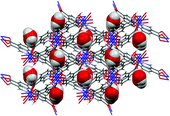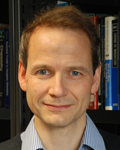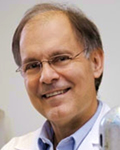The conference series International Symposium on Advancing the Chemical Sciences was launched in 2010, to celebrate the launch of the RSC’s new flagship journal, Chemical Science. ISACS8 was the eighth meeting in the series, and the second to have a focus on challenges in inorganic and materials chemistry. This year’s meeting was held at the University of Toronto, Canada.
A slight break in some unusually hot weather meant that for our time in Toronto, we were blessed with perfect weather – neither too hot nor too cold, but just right! The good weather was clearly being utilised by some members of the university , as was evident in the very healthy looking herbs being growing in the courtyard just outside lecture theatre. I was very good, and did not help myself to any (but I was sorely tempted!).
The conference began on the Thursday evening with an extra special event – a lecture by Profesor Joan Valentine , who was recently awarded an RSC Honorary Fellowship. Her award lecture ‘Manganese and superoxide: Curiosity-driven research at the inorganic chemistry-biology interface’, was a perfect way to open the meeting.
During the next three days, we covered a diverse range of inorganic and materials topics: main group chemistry, materials for chemistry, magnetism, porous materials and catalysis. The conference featured 16 Plenaries, by Warren Piers, Francois Gabbai, Viola Birss, Sossina Haile, Clare Grey, Simon Aldridge, Joe Hupp, George Christou, Russell Morris, Annie Powell, Noritaka Mizuno, Tom Baker, Kyoko Nozaki, Paul Chirik, Roberta Sessoli and William Dichtel. The conference programme was completed with a number of contributed talks. As you might expect from ISACS conferences, all the talks were of the highest quality. Snippets of information I learnt from the conference are that Uranium is the Jekyll and Hyde of the Periodic Table, Chemical Science Editors work on Christmas Eve and that we need about 80 of the elements to live our lives.
One of the social highlights of the meeting for me was the speakers’ dinner, held at the top of the CN Tower. With great food and stunning views, the evening was an excellent way to round off the first full day of the conference. The conference was a good size ( about 150 delegates) and this allowed many opportunities to meet new friends and catch up with old ones at the poster sessions, coffee/tea breaks and lunchtimes. It was good to see a number of people at the conference who I have not seen for a while, including previous Dalton Transactions Development Editor, Anna Roffey, who left the Editorial Office to study for a PhD at UCL, UK over a year ago!
Many thanks to the organisers for arranging a great meeting, in particular local host Doug Stephan and Rachel Thompson from RSC, who in addition to ensuring a well organised meeting, also ensured that we had plenty of sweet treats to keep us going though the day (I have never seen so many cookies…)
Read some articles by the Plenary speakers by following the links below:
Probing the influence of steric bulk on anion binding by triarylboranes: comparative studies of FcB(o-Tol)2, FcB(o-Xyl)2 and FcBMes2, Inke Siewert, Philip Fitzpatrick, Alexander E. J. Broomsgrove, Michael Kelly, Dragoslav Vidovic and Simon Aldridge Dalton Trans., 2011,40, 10345 DOI=10.1039/C1DT10185D
Cyclisation of α,ω-dienes promoted by bis(indenyl)zirconium sandwich and ansa-titanocene dinitrogen complexes, Doris Pun, Donald J. Knobloch, Emil Lobkovsky and Paul J. Chirik Dalton Trans., 2011,40, 7737 DOI=10.1039/C1DT10149H
“Squaring the clusters”: a MnIII4NiII4 molecular square from nickel(II)-induced structural transformation of a MnII/III/IV12 cage Dimitris I. Alexandropoulos, Manolis J. Manos, Constantina Papatriantafyllopoulou, Shreya Mukherjee, Anastasios J. Tasiopoulos, Spyros P. Perlepes, George Christou and Theocharis C. Stamatatos Dalton Trans., 2012,41, 4744 DOI=10.1039/C2DT00030J
Structural and dynamical aspects of alkylammonium salts of a silicodecatungstate as heterogeneous epoxidation catalysts Sayaka Uchida, Keigo Kamata, Yoshiyuki Ogasawara, Megumi Fujita and Noritaka Mizuno Dalton Trans., 2012, Advance Article, DOI=10.1039/C2DT30492A
Metal–organic frameworks for the storage and delivery of biologically active hydrogen sulfide Phoebe K. Allan, Paul S. Wheatley, David Aldous, M. Infas Mohideen, Chiu Tang, Joseph A. Hriljac, Ian L. Megson, Karena W. Chapman, Guy De Weireld, Sebastian Vaesen and Russell E. Morris Dalton Trans., 2012,41, 4060 DOI=10.1039/C2DT12069K
Using the flexible ligand bis(2-hydroxyethyl)amino–tris (hydroxymethyl)methane (“bis–tris”) to access a family of 3d–4f MnIII4Ln4 complexes Amin Khan, Yanhua Lan, George E. Kostakis, Christopher E. Anson and Annie K. Powell Dalton Trans., 2012,41, 8333 DOI=10.1039/C2DT30127J
Magnetic and optical bistability in tetrairon(III) single molecule magnets functionalized with azobenzene groups Thazhe Kootteri Prasad, Giordano Poneti, Lorenzo Sorace, Maria Jesus Rodriguez-Douton, Anne-Laure Barra, Petr Neugebauer, Luca Costantino, Roberta Sessoli and Andrea Cornia Dalton Trans., 2012,41, 8368 DOI=10.1039/C2DT30172E












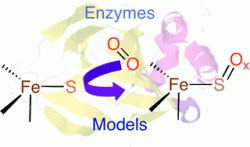
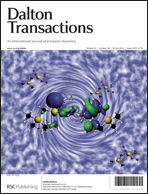
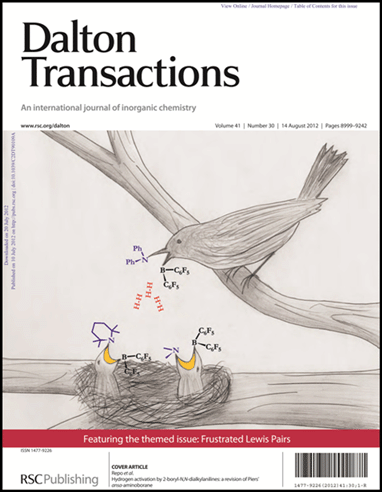

 A
A 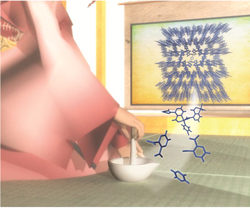
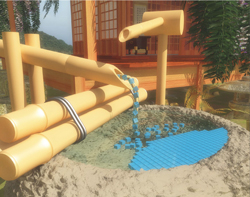 Hydrogen adsorption in the metal–organic frameworks Fe2(dobdc) and Fe2(O2)(dobdc)
Hydrogen adsorption in the metal–organic frameworks Fe2(dobdc) and Fe2(O2)(dobdc)
